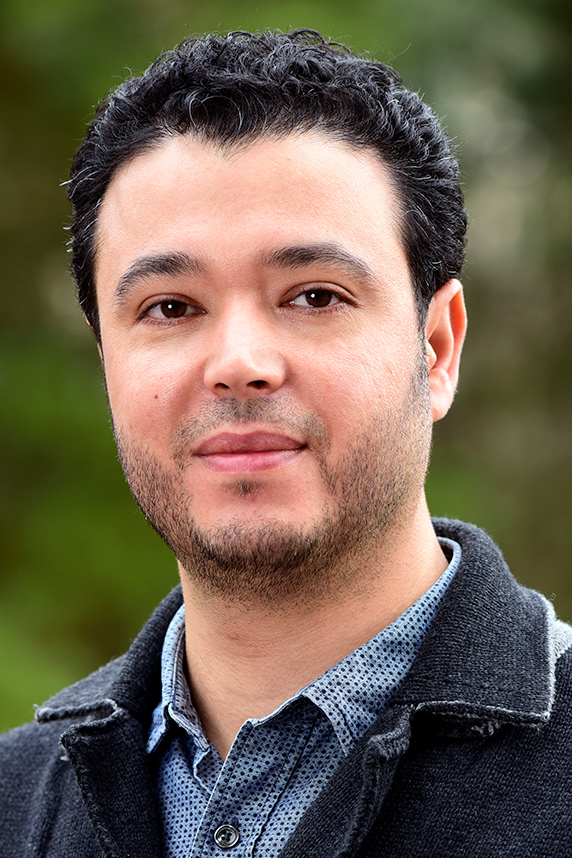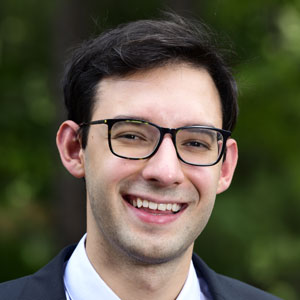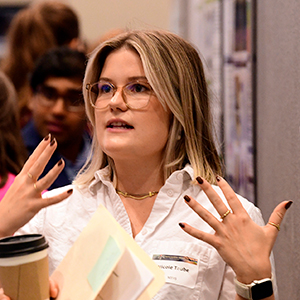Tens of thousands of chemicals from commercial products find their way into the environment, and new substances emerge each day. Studying potential human health effects of each chemical separately is time-consuming and costly, which is why experts around the world agree on the need for more efficient methods.
 Mansouri led multiple international projects to develop predictive computational models aiming at speeding toxicity screens and reduce animal testing. (Photo courtesy of Steve McCaw / NIEHS)
Mansouri led multiple international projects to develop predictive computational models aiming at speeding toxicity screens and reduce animal testing. (Photo courtesy of Steve McCaw / NIEHS)Advances in information technology and machine learning have enabled researchers to develop computational approaches that connect the dots between the structures of chemicals and their potential toxicity.
An NIEHS workshop held online Oct. 3-4 showcased two such computational tools, known as clustering and classification. Clustering allows chemicals with similar properties to be grouped together. Classification allows those properties to be linked to specific biological outcomes.
“These powerful approaches can only be fully exploited if the users have the knowledge and the understanding to be able to correctly apply them and understand the results,” said Kamel Mansouri, Ph.D., the chair of the workshop and lead computational chemist in the NIEHS Division of Translational Toxicology's (DTT) National Toxicology Program Interagency Center for the Evaluation of Alternative Toxicological Methods.
Chemical similarity, the main concept
 Sutherland serves as a study scientist for chemicals selected for evaluation of general and developmental and reproductive toxicity by the Division of Translational Toxicology and National Toxicity Program. (Photo courtesy of Steve McCaw / NIEHS)
Sutherland serves as a study scientist for chemicals selected for evaluation of general and developmental and reproductive toxicity by the Division of Translational Toxicology and National Toxicity Program. (Photo courtesy of Steve McCaw / NIEHS)“There is a pressing need to accurately assess the potential risks of chemicals on human health and the environment,” said Vicki Sutherland, Ph.D., a toxicologist in the NIEHS Division of Translational Toxicology (DTT) and the co-chair of the workshop. “With the ever-increasing number of substances and only a small fraction evaluated, regulators and manufacturers need rapid and efficient approaches to screen and analyze chemical and biological data.”
The toolbox of methods to complete chemical risk assessments that support regulations continues to evolve, noted Charles Bevington, a health scientist at the U.S. Consumer Product Safety Commission.
“Clustering and classification approaches are an important part of that toolbox, especially for assessments that consider multiple chemical substances simultaneously,” he said. “Efforts to improve the consistency, transparency, and scientific rigor of these tools are welcome next steps from this workshop.”
While these tools have been around for years, Sutherland said, there is still a clear need to understand the basic principles that underlie the use of these techniques as well as when and how to best use these methods.
“Essentially, we’re trying to redefine the concept of chemical similarity,” said Mansouri, who noted that there are two approaches that scientists use — unsupervised and supervised. Unsupervised approaches do not involve labeling data, and they require no human intervention.
“Unsupervised general structural similarity might be sufficient for explorative studies, but supervised structural similarity is required where specific structural features are most important for a given biological outcome,” noted Mansouri. How best to group chemicals depends on the context and the goal of a given study.
Collaboration is key to success
“This is an international effort — these tools and approaches are not only important to researchers and regulatory agencies here in the United States, but worldwide,” said Mansouri. “We’re hoping this will be the beginning of strong relationships fostering communications that will allow the field to make greater leaps forward.”
Most of the international experts who participated in the workshop have partnered with Mansouri on previous initiatives, such as the Collaborative Estrogen Receptor Activity Prediction Project and the Collaborative Acute Toxicity Modelling Suite. These crowdsourcing projects produced robust computational models that identify chemicals with potential to interact with the endocrine system and predict whether those substances might be toxic when ingested.
The workshop was supported by DTT's Consumer Products and Therapeutics Program, which aims to develop and apply defined approaches to discover hazards across structural and functional classes of substances. “This workshop was foundational in building collaborations to develop, assess, and harmonize clustering and classification approaches to use in toxicity testing and health effects evaluations,” said DTT scientist Kyla Taylor, Ph.D.
(Catherine Arnold is a contract writer for the NIEHS Office of Communications and Public Liaison.)









